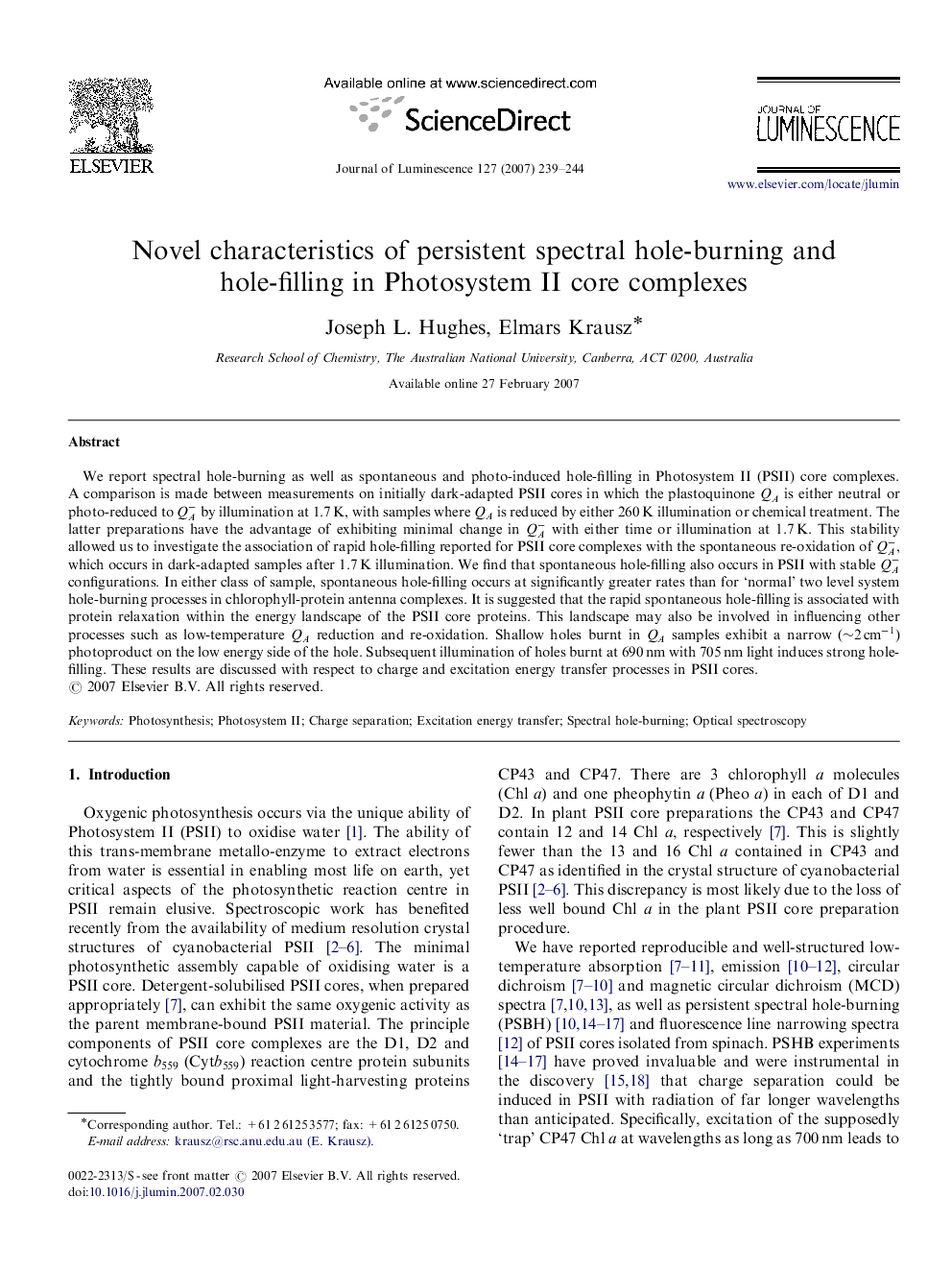| Article ID | Journal | Published Year | Pages | File Type |
|---|---|---|---|---|
| 5403985 | Journal of Luminescence | 2007 | 6 Pages |
Abstract
We report spectral hole-burning as well as spontaneous and photo-induced hole-filling in Photosystem II (PSII) core complexes. A comparison is made between measurements on initially dark-adapted PSII cores in which the plastoquinone QA is either neutral or photo-reduced to QA- by illumination at 1.7Â K, with samples where QA is reduced by either 260Â K illumination or chemical treatment. The latter preparations have the advantage of exhibiting minimal change in QA- with either time or illumination at 1.7Â K. This stability allowed us to investigate the association of rapid hole-filling reported for PSII core complexes with the spontaneous re-oxidation of QA-, which occurs in dark-adapted samples after 1.7Â K illumination. We find that spontaneous hole-filling also occurs in PSII with stable QA- configurations. In either class of sample, spontaneous hole-filling occurs at significantly greater rates than for 'normal' two level system hole-burning processes in chlorophyll-protein antenna complexes. It is suggested that the rapid spontaneous hole-filling is associated with protein relaxation within the energy landscape of the PSII core proteins. This landscape may also be involved in influencing other processes such as low-temperature QA reduction and re-oxidation. Shallow holes burnt in QA samples exhibit a narrow (â¼2cm-1) photoproduct on the low energy side of the hole. Subsequent illumination of holes burnt at 690Â nm with 705Â nm light induces strong hole-filling. These results are discussed with respect to charge and excitation energy transfer processes in PSII cores.
Keywords
Related Topics
Physical Sciences and Engineering
Chemistry
Physical and Theoretical Chemistry
Authors
Joseph L. Hughes, Elmars Krausz,
